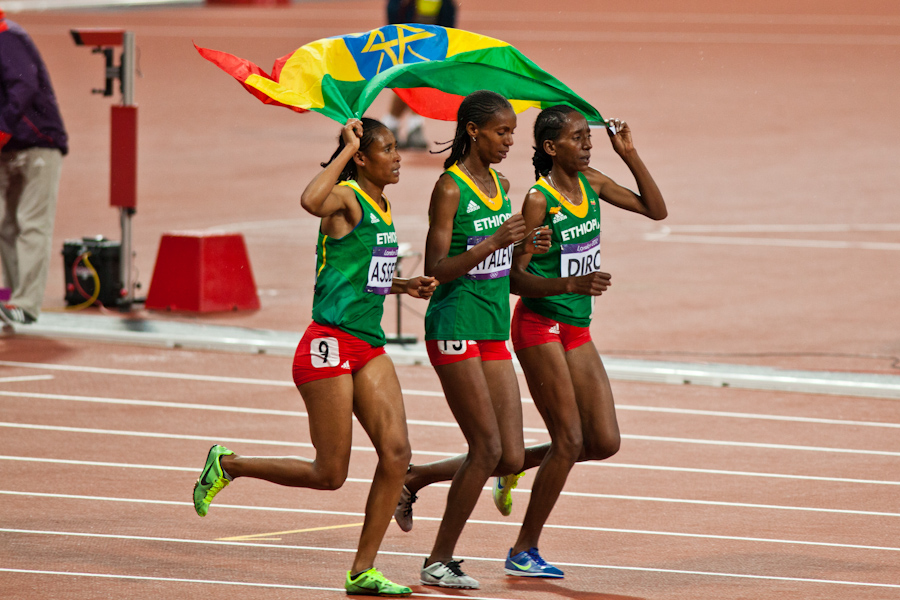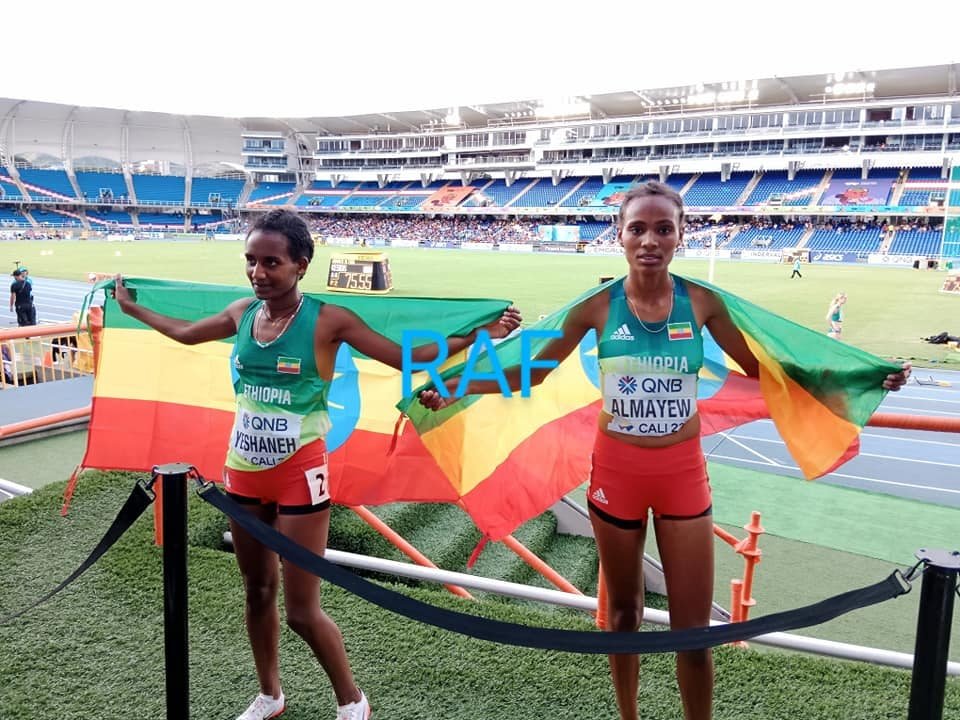Historical Context of Steeplechase in Ethiopia

The steeplechase, a unique and challenging track and field event, has a rich history in Ethiopia, intertwining with the country’s cultural heritage and athletic prowess. Steeplechase running in Ethiopia did not emerge from a single moment or event but rather evolved organically, influenced by the country’s diverse landscapes and athletic traditions.
Origins and Evolution of Steeplechase in Ethiopia, Ethiopia steeplechase
The origins of steeplechase running in Ethiopia can be traced back to traditional practices that involved navigating challenging terrain. Ethiopian communities have long engaged in activities that require agility, endurance, and the ability to overcome obstacles, such as leaping over streams and fences. These practices laid the foundation for the development of steeplechase running.
- Traditional Practices: The rugged terrain of Ethiopia, characterized by mountains, valleys, and rivers, fostered the development of athletic skills that were essential for daily life. Activities like herding livestock, traversing difficult paths, and participating in traditional games involved leaping over obstacles, building the foundation for steeplechase running.
- Early Competitions: As Ethiopia transitioned from traditional practices to modern athletics, the steeplechase emerged as a natural progression. Early competitions, often held in rural areas, involved navigating obstacles such as makeshift fences and water barriers, reflecting the challenges encountered in daily life.
- Influence of Modern Athletics: The introduction of modern athletics in Ethiopia in the early 20th century played a significant role in shaping the development of steeplechase running. The adoption of standardized rules and regulations brought a structured approach to the event, paving the way for organized competitions and the emergence of elite athletes.
Ethiopian Steeplechase Champions and Records

The Ethiopian steeplechase legacy is a testament to the country’s enduring dominance in long-distance running. From the pioneering days of the sport to the present, Ethiopian athletes have consistently pushed the boundaries of human endurance, leaving an indelible mark on the world stage. Their remarkable achievements have not only cemented Ethiopia’s position as a steeplechase powerhouse but have also inspired generations of runners worldwide.
Ethiopian Steeplechase Champions
Ethiopian steeplechase champions have consistently graced the podiums of major international competitions, captivating audiences with their unwavering determination and exceptional skills. These athletes have showcased remarkable feats of athleticism, establishing themselves as formidable competitors in a demanding discipline.
- Getaneh Tessema: One of the earliest Ethiopian steeplechase stars, Getaneh Tessema, emerged as a force to be reckoned with in the early 2000s. He captured the hearts of fans with his impressive performances, culminating in a silver medal at the 2003 World Championships.
- Brimin Kipruto: Kenyan-born Brimin Kipruto, who later acquired Ethiopian citizenship, dominated the steeplechase scene for several years. He is a two-time world champion (2011, 2015) and a two-time Olympic silver medalist (2008, 2012).
- Conseslus Kipruto: Another Kenyan-born athlete who later became an Ethiopian citizen, Conseslus Kipruto, ascended to the pinnacle of the steeplechase world. He is a two-time Olympic champion (2016, 2020), a three-time world champion (2011, 2017, 2019), and holds the current world record.
- Lamecha Girma: The current Ethiopian steeplechase star, Lamecha Girma, is a two-time world champion (2019, 2022) and a 2020 Olympic bronze medalist. Girma is known for his remarkable speed and tactical prowess, pushing the boundaries of the sport with each race.
Ethiopian Steeplechase Records
Ethiopian athletes have consistently rewritten the steeplechase record books, pushing the limits of human endurance and setting new benchmarks for the world to chase. The evolution of Ethiopian steeplechase records reflects the country’s commitment to developing world-class athletes and the dedication of these runners to achieving greatness.
- Getaneh Tessema established the first Ethiopian national record in the steeplechase, clocking in at 8:03.07 in 2002.
- Brimin Kipruto shattered Tessema’s record in 2008, setting a new national mark of 7:53.64.
- Conseslus Kipruto took the national record to a new level in 2017, achieving a remarkable time of 7:54.92.
- Lamecha Girma further elevated the Ethiopian steeplechase record in 2021, setting a new national mark of 7:58.68.
Comparison with Other Countries
Ethiopian steeplechase runners have consistently outperformed their counterparts from other countries, particularly in major international competitions. Their dominance can be attributed to a combination of factors, including:
- Natural Aptitude: Ethiopians possess a natural predisposition for long-distance running, characterized by their lean physiques, high aerobic capacity, and strong cardiovascular systems.
- Strong Running Culture: Ethiopia has a rich tradition of running, with communities actively encouraging and supporting their young athletes.
- Dedicated Training Programs: Ethiopian athletes benefit from rigorous training programs that focus on developing endurance, speed, and tactical awareness.
While Ethiopian steeplechase runners excel in endurance and speed, they often face challenges in the technical aspects of the race, such as negotiating the water jumps. This is an area where they continue to improve, aiming for greater precision and efficiency in their technique.
Training and Strategies in Ethiopian Steeplechase: Ethiopia Steeplechase

Ethiopian steeplechasers are renowned for their endurance, tactical prowess, and ability to overcome the unique challenges of the event. Their training regimens and strategies are carefully designed to develop these attributes and maximize their performance on the track.
Training Regimens and Strategies
Ethiopian steeplechasers typically train in high-altitude environments, which helps them adapt to the thin air and develop a strong aerobic base. Their training programs involve a combination of high-intensity intervals, long runs, and strength training. The focus is on building endurance, speed, and power.
- High-intensity intervals: These sessions involve short bursts of intense effort followed by periods of recovery, helping to improve speed and lactate threshold.
- Long runs: These sessions build endurance and help athletes adapt to the demands of the race distance.
- Strength training: This is essential for developing power and preventing injuries.
Ethiopian steeplechasers also employ specific strategies during races. They often use a conservative approach in the early stages, conserving energy for the later stages. As the race progresses, they gradually increase their pace and make their move in the final laps. They also pay close attention to the water jumps, using a variety of techniques to clear them efficiently.
Water Jump Strategies
The water jump is a defining feature of the steeplechase, and Ethiopian athletes have developed a range of strategies for tackling it effectively. Some common techniques include:
- The “skip” technique: This involves a short, quick skip over the water, minimizing the amount of time spent in contact with the water.
- The “long jump” technique: This involves a longer, more powerful jump over the water, allowing athletes to maintain their momentum.
- The “run-through” technique: This involves running straight through the water, using the momentum to propel them forward.
The choice of technique depends on the athlete’s individual strengths and preferences, as well as the conditions of the water jump.
Coaching and Support Systems
Coaching plays a vital role in the development of Ethiopian steeplechase talent. Coaches work closely with athletes to develop individualized training plans, provide technical guidance, and offer mental support. Ethiopia has a strong tradition of coaching, with experienced coaches who have a deep understanding of the event.
- Experienced Coaches: Coaches have a deep understanding of the event and provide tailored training plans.
- Strong Support Systems: Ethiopian athletes often benefit from strong support systems, including family, friends, and community members.
The Ethiopian Athletics Federation also provides support to athletes, including funding, training facilities, and access to international competitions. These support systems play a crucial role in nurturing talent and helping athletes reach their full potential.
Ethiopia steeplechase – Imagine yourself cheering on the Ethiopian steeplechase runners, their powerful strides and impressive water jumps captivating your attention. After the race, you retreat to your living room, sink into the luxurious comfort of a leather swivel chair and ottoman , and reflect on the incredible athleticism you just witnessed.
The smooth leather and gentle swivel motion soothe your body, mirroring the graceful movements of the runners you just watched. Just like the Ethiopian steeplechase, this chair is a testament to the beauty and strength of human endurance.
Ethiopia’s steeplechase runners are known for their incredible endurance, navigating the obstacles with grace and speed. Their resilience reminds me of the timeless elegance of a basket weave leather chair , a piece that withstands the test of time with its intricate design and durable craftsmanship.
Just like the steeplechase, this chair is a testament to the beauty of enduring tradition and the power of a well-crafted piece.